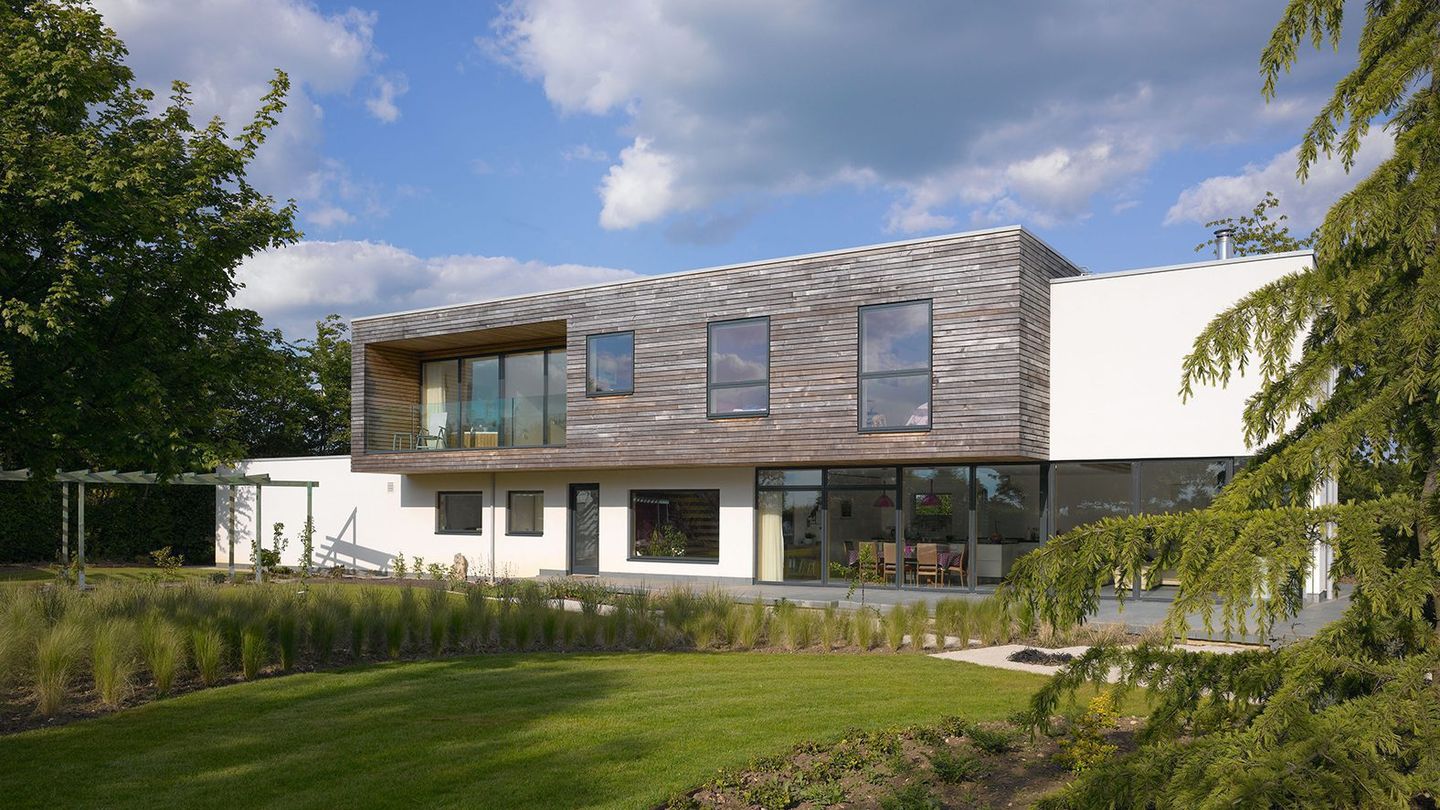

What does it take to build a modern country home?
With manors and estates cropping up across the countryside, we as a trio of architects how to build a country house for the 21st century
- Words: Gentleman's Journal
Say ‘country home’ and your mind will inevitably be drawn to Downton visions of sweeping lawns, trimmed trees and extravagant architecture: builds that look as though they’ve been ruling over their considerable acreage for years, and are solid enough to continue doing so for epochs to come.
But, with new money entering the property market year-on-year, and developers clamouring to get their own slice of country heaven, is the very definition of a country home shifting? We turned to a trio of property and architecture experts to discuss what a country home is today, how difficult it is to get one built, and what designs and styles are currently in vogue.
What do you class as a ‘country home’ today?
“A country house is a house in the country!” leading architect Stuart Martin tells us. “Usually built by someone with the chief aim of enjoying rural life, they are typically large enough to have several friends stay for the weekend, so perhaps six bedrooms – with some often with specialised for sports or games.”
“Traditionally,” adds leading architect and interior designer Janine Stone, “a country home is a substantial dwelling set within its own grounds. However, today if there is enough garden or tree cover to make your neighbours feel hidden, even in suburban locations, you could say you have a country house setting. And this is often the case in the villages of London and the vicinity where many clients desire to be located.”
So, with such a wide definition – Patrick Michell of Platform 5 Architects even defines a country house as “a domestic space that strongly relates to the landscape that surrounds it” – the scope is wider than ever for designers of country homes. But has this led to innovation, or simply opened up the traditional style to a wider market?
How are new-build country homes designed in the 21st Century?
“We would take a contemporary approach to designing a new country house,” begins Michell. “We tend to use large picture windows to frame views of the landscape and bring daylight into the spaces. We would also make reference to local architecture, rooting the house in the tradition of the landscape by referencing historic building forms and being playful with materials typical of the area like we did at Backwater.
“A contemporary architectural approach gives you much more flexibility to design a house around your lifestyle and craft it around how you want to use the spaces.”
"We make reference to local architecture, rooting the house in the tradition of the landscape by referencing historic building forms..."
Stuart Martin, classical designer, surprisingly agrees. Even though they look to tradition, the architect ensures me that they are not hidebound: “Rather, we try and combine traditional elements harmoniously and creatively, but with understanding of what gives each element value and meaning architecturally.”
“A good brief from the client is essential,” continues Janine Stone. “Both in pragmatic space usage terms and aesthetic likes and dislikes, we show a client how they can be inspired and delighted within the brief and gradually they will arrive at a place they didn’t think they could reach.”
Can it be difficult to undertake projects of such scale in rural areas?
“The key is to focus on excellent planning and first class logistical support,” says Stone. “Combine this with delivery of intelligent solutions to everyday problems, and a genuine desire to create a wonderful environment, and you will exceed the client’s expectations.”
But surely there are issues when building on such old, hallowed sites of land? “The main challenge is Planning Permission,” says Martin. “There is a built-in presumption against development on green field sites unless you can convince planners that your proposal is of outstanding quality. And, on very remote sites, the bringing in of services such as power and water can be challenging as well.”
Patrick Michell, too, understands the difficulty of building remotely. Platform 5 find it important to design and build around materials easily available to the site, or using innovative solutions such as helicoptering in pre-fabricated elements. “On one of our projects located on a river, we looked at pre-fabricating a house in sections and floating it on a barge to the site.”
But what can be perceived as obstacles during the build, the architect continues, can benefit everyday life in your new rural home. “Technologies are now readily available so that you can create your own water supply with a borehole or rainwater collection, generate your own electricity through photovoltaic systems and design a well-insulated space that doesn’t need a heating system or use a wood-burning stove to heat your water – you will never have to pay a utility bill again!”
So, with more new country homes being built, what are the most popular styles?
“The most popular style remains Classical,” says Stuart Martin. “More Modernist houses have been built recently, but I gather from Estate Agents that they are harder to sell on and consequently hold their value less well.”
Janine Stone agrees. “The Georgian and Arts & Crafts styles are perennially popular, as they seem to encapsulate the essence of a comfortable and elegant Country House. But also, increasingly clients have areas that they expect to appear contemporary. Blending two opposites is often the skill a designer needs to fulfil a clients’ aspirations for their home.”
"More Modernist houses have been built recently, but I gather from Estate Agents that they are harder to sell on and consequently hold their value less well..."
Patrick Michell has also encountered an increasing popularity in modern design: “Contemporary architecture is becoming more popular as clients have become much more focused on high quality design over the last decade and planning authorities have become more supportive of this approach.”
So, while the country home is well and truly still alive, cropping up across the countryside to house traditionalists and new builders alike, there seems to be a want to modernise the style – to bring the standard of contemporary housing to the classic style and design of iconic manors, estates and houses.
Looking to invest? Here are 7 of the world’s best summer homes to invest in


